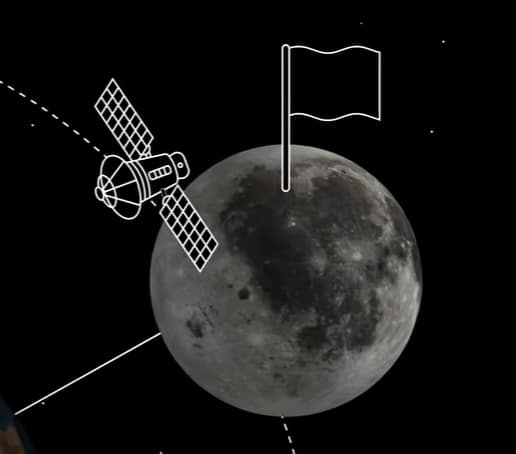PODCAST: explore the burgeoning vision of a lunar economy and sustained human presence on the Moon, a significant departure from past temporary explorations. Despite the Moon’s inhospitable environment with extreme conditions and radiation, current endeavors aim to build an “architecture that allows a lunar ecosystem to emerge,” transforming it into “humanity’s home on another world.” This ambitious goal necessitates immense scientific discovery, technological advancement, and multi-billion-dollar investments, with a primary focus on developing payload transport, utilizing lunar resources like water ice for rocket fuel (In-Situ Resource Utilization), and innovating robotic 3D printing for construction using lunar regolith. While the existing space economy is largely satellite-driven, the potential for a thriving lunar market hinges on creating “a value proposition that delivers something that people want to pay for,” highlighting both the immense challenges and transformative opportunities of establishing a permanent foothold on our celestial neighbor.

Establishing a sustained lunar presence faces a multitude of complex challenges, encompassing environmental, technological, economic, and geopolitical factors:
- Extreme and Inhospitable Environment: The moon is an “extremely inhospitable place”. Key environmental challenges include:
- Dusty Environment: It has a “very dusty environment” covered in “lunar regolith, a deceptively hostile sand-like substance” that is “extremely dusty, electrostatic, so it sticks to everything and it’s razor sharp”. This poses significant challenges for both humans and equipment.
- Temperature Swings: The moon experiences “extreme temperature swings”.
- Radiation: There is “a lot of radiation”, and designing structures that provide a “radiation shield to protect humans” is a major engineering challenge.
- Meteorite Bombardment: The moon “gets bombarded by meteorites”.
- Microgravity Conditions: “Microgravity conditions” also present a challenge.
- Solar Flares: The threat of “solar flares” exists.
- Technological and Operational Hurdles:
- Reliable Landing: Achieving “reliably consistent” payload transport to the lunar surface is crucial. Prior to 2025, only five countries and one commercial company had successfully landed intact. Recent missions have demonstrated the difficulty, with one commercial company’s lander crashing and another landing in the wrong orientation. Landers require sufficient fuel to operate large thrusters for a soft landing, carefully avoiding numerous craters and rocks.
- Lack of Simulation Environments: There is a significant challenge in the inability to adequately “simulate lunar environment, including gravity and so on,” on Earth, leading to “a lot of unknown factors there”. Many problems can only be resolved by taking the risk of sending “more missions to the moon”.
- Autonomous Construction: Developing technologies like Icon’s Project Olympus for robotic, autonomous construction on the moon is essential. However, demonstrating that the technology “can print autonomously and construct surface infrastructure autonomously” is a long roadmap, estimated to be “at least another 20 years before we can consider how 3D printing can be incorporated within the design of a pressurized habitat”.
- Economic Viability and High Costs:
- Massive Investment Required: The vision to build a lunar ecosystem requires “tens and hundreds of billions of dollars” in investment.
- Lack of Clear Customer Value: For commercial ventures to thrive, companies need to find “customers” and “a value proposition that delivers something that people want to pay for”.
- Cost of Transporting Materials: Launching materials from Earth to the moon is incredibly expensive due to weight. For example, bringing even a small amount of a special concrete material (Lava Creek Carbon X) could cost “a couple hundred thousand dollars for essentially a single brick worth of material,” meaning an average-sized home could cost “upwards of $6 billion in bricks alone” if materials were transported from Earth. This emphasizes the critical need for In-Situ Resource Utilization (ISRU) to “live off the land”.
- Limited Current Understanding of the Moon:
- Despite past missions, humanity has “only scratched the surface” of understanding the moon. Only a dozen people have ever walked on the moon, which is comparable to exploring a continent the size of Africa in a couple of hours – suggesting there is “so much more of the moon” to explore. The more is learned about the moon, the more effectively it can be used as a proving ground for capabilities needed for further space exploration.
- Geopolitical Tensions:
- The current “tense world on a geopolitical level” poses a challenge to international collaboration in space. Lawmakers have raised concerns about China’s increasing activity in space, including the potential for the moon to be considered a “military high ground,” allowing for strategic advantage over assets in Earth’s orbit.
In summary, a “lunar ecosystem and economy still have some big unknowns from proving we can land consistently to building infrastructure, to finding the resources to keep humans alive”. “None of this modern moonshot is guaranteed”.